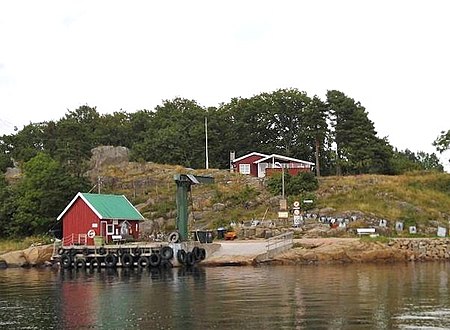Veierland

Veierland is a populated, car-free island in Færder Municipality in Vestfold county, Norway. The 4.4-square-kilometre (1.7 sq mi) island is located in the Tønsbergfjorden, between the mainland (to the west), the island of Tjøme (to the east), and the island of Nøtterøy (to the northeast). Veierland Church was established in 1905. Historically, there was a Veierland School, however this closed in 2013. Veierland is primarily a summer vacation community. The island has a 17-kilometre (11 mi) shoreline with many popular swimming beaches including Kjølholmen, Hverveodden, and Kongshavn. Places for accommodation and eateries are open during the summer months.Veierland has been inhabited as long as Vestfold county. The island has a permanent year-round population of about 150 people, however, the island experiences significant summer tourism. Over 450 vacation homes can be found on the island. The island has no bridge or road connections. Veierland is connected to the mainland by 9-17 daily ferries from Tenvik on the island of Nøtterøy via the Jutøya AS. During the summer months there are also ferries from Engø peninsula in Sandefjord Municipality. Convenience stores, a golf course, and restaurants are operated on the island during summers, although most services are closed outside the tourist season. The island is primarily car-free, but residents may acquire permits for vehicles such as tractors, golf carts, mopeds, and ATVs. Besides its boat harbors, beaches, and cabin communities, the island remains densely forested with much agricultural activity.
Excerpt from the Wikipedia article Veierland (License: CC BY-SA 3.0, Authors, Images).Veierland
Såta, Færder
Geographical coordinates (GPS) Address Nearby Places Show on map
Geographical coordinates (GPS)
| Latitude | Longitude |
|---|---|
| N 59.14858 ° | E 10.33719 ° |
Address
Såta 17
3144 Færder
Norway
Open on Google Maps







